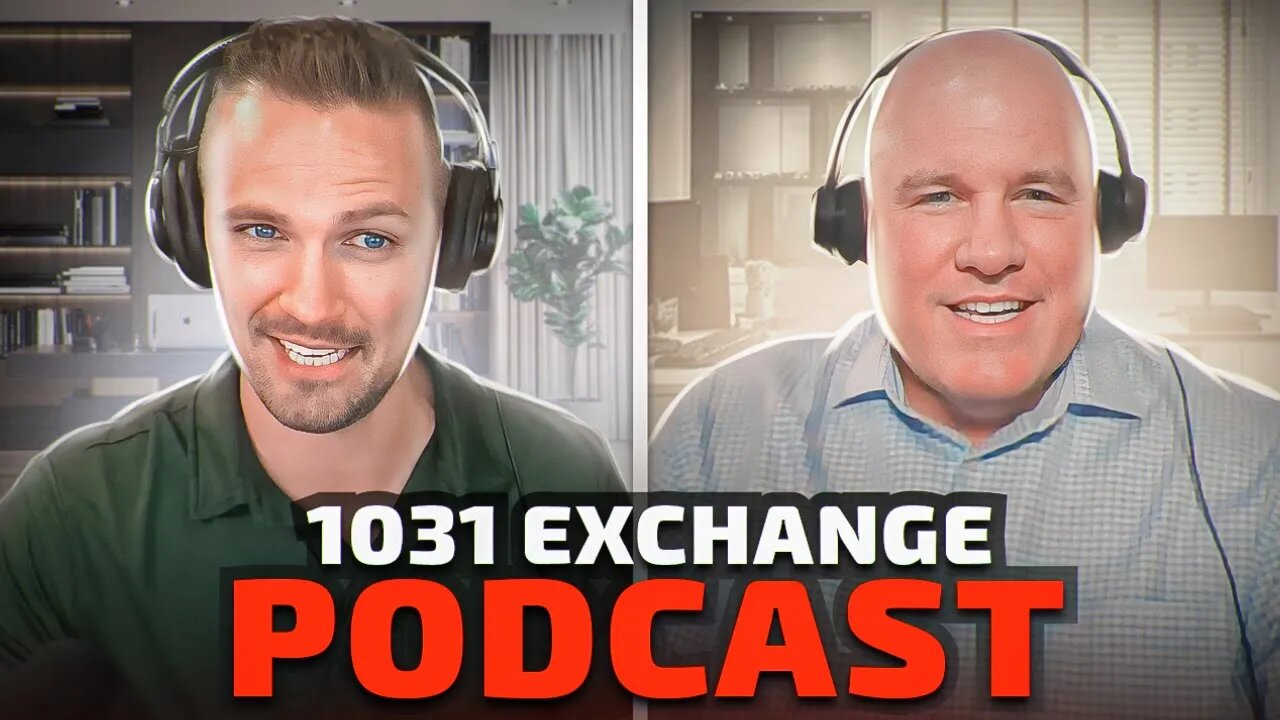Premium Only Content

Finally! Scott Saunders Teaches 1031 Exchanges for Land Investors | REtipster Podcast 167
Show Notes: https://go.retipster.com/167-scott-saunders/?utm_source=youtube&utm_medium=social&utm_campaign=podcast&utm_content=HaZsXo7nnQs
Join Our Community: https://welcome.retipster.com/newsletter/?utm_source=youtube&utm_medium=social&utm_campaign=podcast&utm_content=HaZsXo7nnQs
If you’ve been around the real estate investing world for any length of time, you’ve probably heard of the 1031 Exchange before… but just in case you haven’t, we’re going to give you a quick primer on what this is and more importantly, how you can use it to save yourself a TON of money on taxes as you’re growing your real estate portfolio.
The 1031 Exchange is one of those fantastic tax advantages real estate investors get to take advantage of, and you NEED to know about this if you’re planning to make it big in real estate.
In this lesson, I'm talking with Scott Saunders, the Senior Vice President of Asset Preservation Incorporated. Scott has an extensive background and a huge wealth of knowledge and experience in this realm. He will help us develop a new understanding and appreciation for how you can use this mechanism to get further, faster when you’re upsizing your portfolio, whether you're selling off a piece of land or some other type of real estate.
As land flippers, we are often considered "dealers" who cannot take advantage of this helpful tool, but much of your classification depends on your intent and how well you document it along the way, so be sure to learn how to do it right!
0:00 - Introduction to the 1031 Exchange
2:40 - Advantages for Land Investors
8:57 - The Power of Deferring Taxes
10:42 - Accessing Equity with a Refinance
11:34 - Timeline and Deadlines
12:59 - The Exception for Presidentially Declared Disaster Areas
13:30 - Timelines and Flexibility in Property Identification
14:34 - Tips for Easier Property Identification
15:41 - Three Different Rules for Property Identification
26:21 - Qualified Intermediaries and Tax Fraud
28:47 - Catching Qualified Intermediaries
30:44 - Ensuring Good Security
33:32 - Minimum and Maximum Deal Sizes
38:37 - The Potential of Real Estate Investment
39:52 - Tax Liability and Foreign Properties
41:12 - Proving Investor Status
43:27 - Importance of Documentation
46:19 - Gray Area and Structuring
50:45 - Intent and Actions
51:59 - History of 1031 Exchanges
53:31 - Benefits of 1031 Exchanges
57:31 - Time Constraints and Deal Quality
1:00:15 - Subdividing Land and Intent
1:03:23 - Strategies for Buyers to Utilize 1031 Exchanges
1:04:58 - Mistakes to Avoid in 1031 Exchanges
1:07:15 - Importance of Tax Planning and Entity Structure
1:08:17 - Mitigating Risks in 1031 Exchanges
1:15:28 - Economic Ups and Downs and Distress in the Commercial Sector
1:16:13 - How to Evaluate DST Options
1:16:41 - Plan C: Last Fallback Provision
1:17:23 - Contacting Scott and API Exchange
1:17:39 - Wrapping Up and Final Thoughts
#1031explained #1031exchange #1031exchangeintermediary #1031 #retipster #retipsterblog #realestateinvesting #realestateinvestment #realestateinvestor
-
 52:03
52:03
Kimberly Guilfoyle
4 hours agoLatest Updates on Deadly Air Collision, Plus Major Hearings on Capitol Hill,Live with Marc Beckman & Steve Friend | Ep.192
20.2K7 -
 1:26:50
1:26:50
Redacted News
2 hours agoWhat happened? Trump DESTROYS the Pete Buttigieg run FAA for tragic airline crash | Redacted News
88.2K70 -
 43:37
43:37
Candace Show Podcast
2 hours agoThe Taylor Swift Plot Thickens | Candace Ep 142
59K33 -
 1:57:53
1:57:53
Revenge of the Cis
3 hours agoEpisode 1437: Kash Me Outside
27.3K2 -
 LIVE
LIVE
Dr Disrespect
6 hours ago🔴LIVE - DR DISRESPECT - WARZONE - CRAZY TRIPLE THREAT CHALLENGE
3,566 watching -
 3:10:10
3:10:10
Power Slap
9 days agoPower Slap 11: Da Crazy Hawaiian vs Dumpling 2 | Thursday January 30th 12pET/9aPT
3.5M101 -
 1:19:18
1:19:18
Dr. Drew
5 hours agoDr. Peter McCullough: RFK Jr. Faces Senate Hearing Circus, As 81,000 Doctors & Experts Publish New Demand For COVID-19 Vaccine Recall – Ask Dr. Drew
70.2K18 -
 1:02:30
1:02:30
In The Litter Box w/ Jewels & Catturd
23 hours agoConfirm Kash & Tulsi! | In the Litter Box w/ Jewels & Catturd – Ep. 731 – 1/30/2025
64.3K23 -
 1:54:36
1:54:36
PudgeTV
6 hours ago🟡 Practical Pudge Ep 52 | Sticker Mule CEO & Future NY Congressman - Anthony Constantino
27.5K -
 LIVE
LIVE
Major League Fishing
1 day agoLIVE! - Bass Pro Tour: Stage 1 - Day 1
183 watching